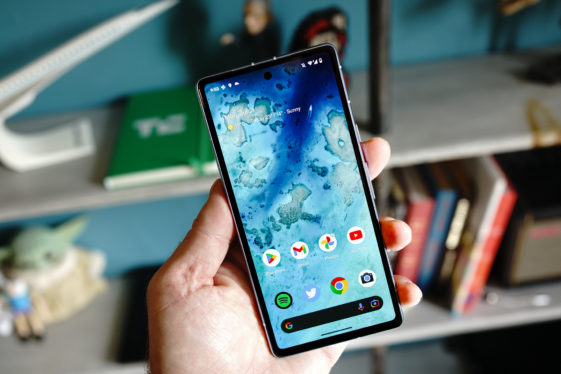Google’s Pixel lineup has been a steady and stalwart performer for may generations now, and while the company is still obviously open to bold experimentation with its smartphones – the Pixel Fold being the most recent example – it might be doing the most impressive work on the other end of the spectrum, by taking what works and moving it downmarket with economic efficiency. I’m talking specifically about the Pixel ‘a’ lineup, a now-perennial mid-year update that takes the best of last year’s flagship, cuts pretty much exactly the right corners, and offers a fantastic device at a much more palatable price point for a general audience.
This year, we got the Google Pixel 7a: a $499 device with a 6.1-inch OLED display, Google’s top-of-the-line Tensor G2 processor and a camera system exceeded only really by its more expensive ‘Pro’ sibling. I’ve been using the phone for a few weeks now, and it’s hard to understate how little the device feels like it has made any real compromises when it comes to things that matter to smartphone users – even more demanding ones who want the latest and greatest tech.
Google has also been hard at work on the software side, and Android 13 that the device ships offers a mature and well thought-out interface, and a slew of features that offer a truly differentiated experience if you’re coming from an iPhone and iOS. In particular Android’s speech-to-text and live transcription features are fantastic, as are the Pixel’s live translation capabilities, which turns your smartphone into essentially a multi-lingual super power that iPhone just can’t come close to matching.
It’s also hard to understate just how good the camera on the Pixel 7a is, and how far that goes in terms of offering a competitive advantage for a so-called ‘mid-range’ phone. While it’s true that the 7a lacks the telephoto lens that the top-end Pixel 7 Pro provides, and that it also cuts corners vs. that flagship camera system in a number of ways, the qualities of the photos that the 7a produces are top notch, and at least on par with the best you can get with competitive devices that cost twice or more.
The display on the Pixel 7a also feels far superior to what you’d expect from a $500 phone. The 90Hz refresh rate on the OLED panel makes for buttery-smooth scrolling, and while it doesn’t be the current 120Hz high-water mark, I doubt many customers would be able to identify a difference at all, let alone feel like they’re missing out on something. The 6.1-inch screen is also smaller than the one on both the Pixel 7 at 6.3 inches, and the Pixel 7 Pro at 6.7 – but after extensive use that is clearly a feature not a bug, especially in a world where the number of choices for smaller-size smartphone continues to dwindle.
With the Pixel a-series, and the 7a in particular, it feels like Google is quietly raising the bar on what people should expect from smartphones that cost less than $1,000 – and honestly it kind of feels like it’s almost lapping its closest competition. Apple’s lower-cost devices feel much more like they’re intentionally restricting certain features and advantages to higher-cost hardware, and perhaps because of its challenger status, Pixel just honestly feels like it’s doing way more in the way of innovation and experimentation to advance the state-of-the-art vs. iPhone when it comes to smartphones. That applies to big swings like the Pixel Fold, but also to more down-to-earth offerings like the 7a.
This year’s lineup also includes the Pixel Watch, the Pixel Tablet and the Pixel Buds Pro, all of which excel in similar ways as somewhat sleeper hits in the gadget world. Combined with Google’s recent strategy of effectively spoiling its own launch moments, the whole vibe its hardware business is conveying is much more of a ‘chill, but great hangs’ vs. Apple’s ‘showy popular kid,’ and I’m excited to see what that means for what comes next.

